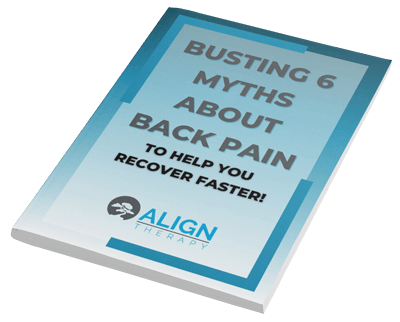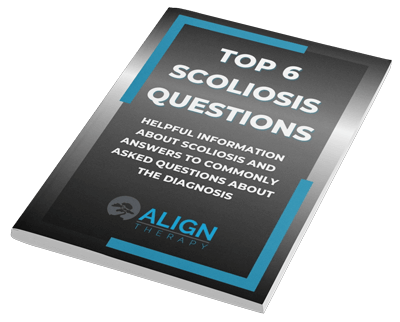Attending the 2025 SOSORT (International Society on Scoliosis Orthopaedic and Rehabilitation Treatment) International Congress in Dubrovnik, Croatia, was an amazing experience. Not only was this conference in an amazing location, it also provided valuable insights into patient care and management strategies from experts in the field.
Here are my top four takeaways from the conference after 3 days of review on current research on conservative scoliosis treatment:
1. More Options for PSSE
Each year I find there are more schools teaching PSSE (Physiotherapeutic Scoliosis Specific Exercise). This is great, and I think overall, this helps to further and improve our specialty of scoliosis treatment.
Mainly, there are four PSSE schools that are represented in the research:
- The Schroth Method – Developed initially in Germany. There have been a few schools break off of the original Schroth School, including “PSSE Schroth” and “Schroth Best Practice”.
- SEAS (Scientific Exercise Approach to Scoliosis) Approach – Developed in Italy.
- Lyon Method – Developed in France
- BSPTS (Barcelona Scoliosis Physical Therapy School) – Developed on the principles of Schroth with concepts added by Dr Manuel Rigo.
This is not an all inclusive list of the school that focus on scoliosis treatment, but these are the main schools teaching research backed approaches to scoliosis treatment. There are many similarities between these methods, but they do differ in specific ways.
One thing to keep in mind when looking for conservative treatment for scoliosis is to look for a method that has been researched and found to be effective.
Treatment that is just based off of personal experience, or one good case, does not have the consistency or backing needed to effect change in the spine.
From the conference, one of my biggest takeaways for those seeking treatment: Make sure you find a method that has been researched!
Second biggest takeaway from this topic: Make sure the provider you are seeing is specialized and certified in the method you are looking for.
Many times, it comes down to how good the therapist is, rather than how good the method is. So, make sure to do your homework when deciding on which provider and method to go with. Not all providers from these school are the same or as effective.
2. Presenting Surgery as a Viable Option, Not a Threat
One of the lectures at the SOSORT conference was by Laurel Blakemore, MD, who is currently the president of the SRS (Scoliosis Research Society). She discussed current surgical techniques along with factors to think about when surgery is considered.
A significant discussion point, as well as thought I had, was the need to shift how we communicate about surgical options with patients and their families. While our primary goal remains to manage scoliosis conservatively, it’s essential to paint surgery not as a failure but as a valid and sometimes necessary treatment path.
By providing balanced information about surgical outcomes and advancements, we can help patients make informed decisions without fear. This approach builds trust and ensures that if surgery becomes necessary, it’s viewed as a proactive step toward improved quality of life.
The fact is, the majority of our scoliosis cases that go to surgery do really well and have a good quality of life. Sure there are occasional complications (infection, numbness, pain, etc), but for the most part, these kids have a great life afterward with the majority having no significant issues.
With that said, we still want to reduce the progression to scoliosis and avoid it if we can, but this should not be “at all costs”. There is a place for surgery in the treatment of scoliosis, and it is a good option if it is needed.
If you are working with a provider who is painting a bad picture of surgery and making you scared, you may want to consider a different provider.
3. Aligning Treatment Goals with Patient Priorities
Another key takeaway was the importance of involving patients and their families in setting treatment goals. Traditional clinical metrics, such as Cobb angle measurements, may not fully capture what matters most to patients.
As a clinician, I usually will take some specific measurements on the first day. Cobb angle, ATR, strength, flexibility, posture, kyphosis, etc. These all help me to gain a better understanding of how we will be treating the curve. But…they don’t mean a whole lot to my patients.
Sometimes we get fixated on the Cobb Angle. While this is a good way to determine if the curve is getting worse or better, there is so much more to how the scoliosis curve affects your life.
Patients often prioritize:
- Pain reduction
- Maintaining an active lifestyle
- Aesthetics (how it looks)
- Avoiding surgery
- Preventing curve progression
Focusing on patient-centered outcomes can help improve motivation and compliance. More importantly, these outcomes are more important to the person sitting in front of us, and we should be helping them meet their goals.
After all, they are in my office for a specific reason. We should listen to that reason and make a plan of attack that addresses that reason.
Making our clinical measurement match, or agree with, their goals is very important. For instance, studies have shown that maintaining a curve below 30 degrees at skeletal maturity is associated with better long-term outcomes. This way we can meet their goal of less pain while we focus on the clinical goal of the Cobb Angle, which is easier to measure objectively. Emphasizing such tangible goals can make treatment more relatable and achievable for patients.
4. Emphasizing Compliance for Optimal Outcomes
Compliance emerged as a critical factor in successful scoliosis management. Whether it’s adherence to Physiotherapeutic Scoliosis-Specific Exercises (PSSE) or consistent brace wear, patient commitment significantly influences outcomes.
Research presented at the conference highlighted that:
- Number of sessions of PSSE attended correlated with the outcome of treatment for adults and adolescents. So, the more sessions of PSSE someone had, the higher chance they had of having a good outcome.
This is important to remember that if you really want a good outcome, make sure you are attending your PSSE in-person visits. This will help you get the best results possible. Don’t skimp on your treatment! - High brace compliance (over 20 hours daily) was associated with reduced curve progression and lower surgery rates. This is a consistent finding in the research. If you are wearing a brace, make sure to wear it enough that it is the most effective.
Consistent and compliant brace wear time is overall the best way to avoid surgery and progression of the curve. It is even more important than the type of brace you have. So make the time count!
These findings underscore the need for strategies that support and encourage patient compliance. This might include personalized exercise programs, regular follow-ups, and leveraging technology to monitor and motivate patients.
Hopefully we will see more ways in the future to improve compliance and keep our patients motivated.
Moving Forward
The insights from SOSORT 2025 reinforce the importance of patient-centered care in scoliosis management. By making sure to work with someone specialized in treatment, presenting surgery as a viable option, aligning treatment goals with patient priorities, and emphasizing compliance, we can enhance patient outcomes and satisfaction.
As we integrate these approaches into our practice, we remain committed to providing compassionate, effective care tailored to each patient’s unique needs.
Want personalized guidance on your scoliosis journey?
Call (801) 980-0860 or click here to schedule a free phone consultation with our team to discuss your goals and explore the next best step for your care.
More free resources:
Download a free scoliosis report – Adult Scoliosis Lehi, UT, Adult Scoliosis St George, UT – Align Therapy Clinic, Utah
Read our blog – Non-Surgical Scoliosis Strategies: 5 Natural Ways to Support Your Spine – Align Therapy Clinic, Utah
Read our blog – Traveling with Scoliosis or Back Pain: 3 Tips to Help Reduce Pain While Flying



